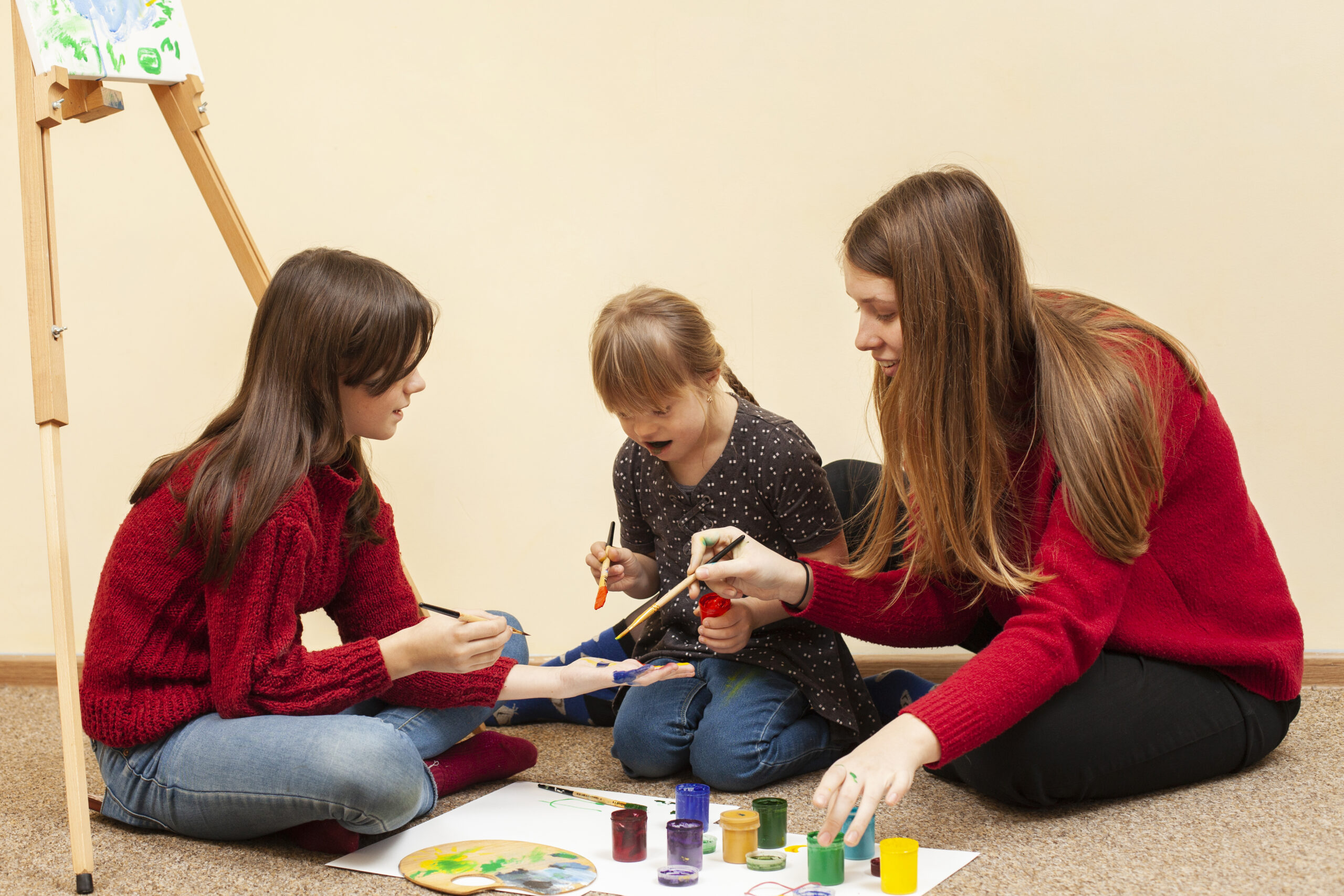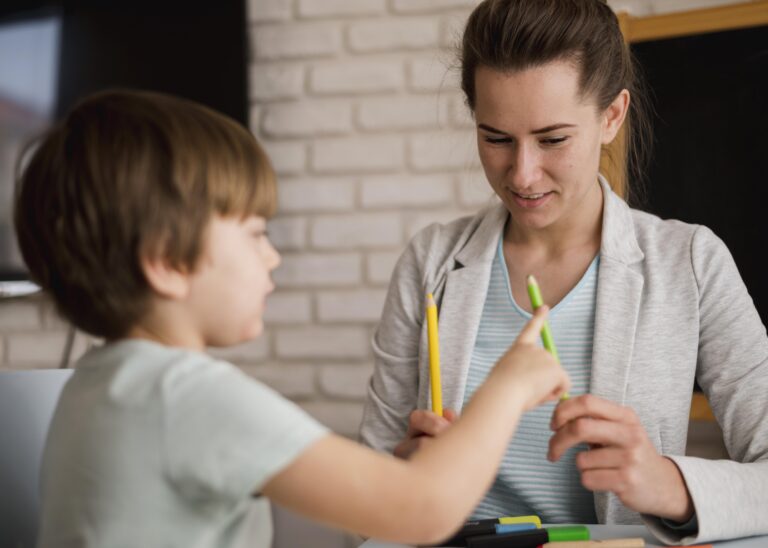Promoting Gratitude and Awareness in Children With Autism
Promoting Gratitude and Awareness in Children With Autism Navigating the social world can be daunting for children with autism, often leading to challenges in areas such as bullying and socialization. How can we guide these young minds towards a path of gratitude and heightened awareness? This article delves into the science behind gratitude’s impact on autism development, effective mindfulness techniques to foster awareness, and engaging activities designed to instill a sense of thankfulness in children on the spectrum.
Readers will benefit from practical strategies to improve accessibility to gratitude-related concepts and methods to enhance emotional understanding through sensory experiences. By addressing the real challenges in cultivating these skills for neurodiverse children, this content equips parents, educators, and neurodiverse school with actionable solutions. The language is kept straightforward and directly relevant to the needs of those invested in the growth and well-being of children with autism, ensuring that the guidance provided is both accessible and effective.
Key Takeaways
- Practicing gratitude enhances social interactions and cognitive skills in children with autism
- Mindfulness and gratitude exercises improve focus, emotional regulation, and stress management
- Visual aids and storytelling help children with autism understand and express emotions effectively
- Collaborative parent-teacher strategies reinforce gratitude and positive behaviors at home and school
- Personalized educational approaches cater to the diverse learning needs of neurodiverse students
Understanding the Role of Gratitude in Autism Development
In the journey of autism development, gratitude plays a vital role in shaping social interactions and cognitive aptitude. Through training in life skills such as gratitude, children with autism can enhance their problem-solving abilities and improve their social repertoire. A deep dive into neurology reveals how practicing thankfulness can have transformative effects on the brain, fostering positive connections and reinforcing the cognitive benefits of gratitude. This section examines the impact of gratitude on social dynamics in autism and explores the myriad cognitive advantages it confers.
Explain How Gratitude Impacts Social Interactions in Autism
In children with autism spectrum disorder, fostering gratitude can significantly enhance their social interactions. The act of expressing thanks not only involves the recognition of someone else’s effort or kindness but also encourages the child to evaluate social exchanges more deeply. This practice can lead to improved behavior, facilitating smoother interactions in the least restrictive environment and beyond, naturally integrating the necessary social skills crucial for their development.
Moreover, intentional gratitude exercises may complement psychotherapy by reinforcing positive affirmations and self-awareness among children on the autism spectrum. By acknowledging and appreciating the roles of others in their lives, these children may experience a boost in empathy and a potential reduction in social anxiety, laying the groundwork for more meaningful connections and interactions that resonate well beyond the confines of therapy.
Discuss the Cognitive Benefits of Practicing Gratitude
Integrating the practice of gratitude into the lives of children on the autism spectrum can yield considerable cognitive benefits, particularly in the areas of speech and communication. As these individuals often face challenges with the conventional signs and symptoms of communication, routine gratitude exercises can encourage thoughtful speech patterns and enhance verbal expression. This development is particularly significant in the suburban home setting or educational branch, where daily interactions provide a fertile ground for nurturing these skills.
Incorporating technology as an aid in teaching gratitude offers an adaptive approach for children who thrive within interactive learning environments. By using targeted applications and digital resources, educators and parents can create personalized experiences that resonate with a child’s unique abilities. Such an approach is not only engaging but also supports cognitive development, fostering an enhanced awareness of interpersonal dynamics among peers and in community settings.
Implementing Mindfulness Techniques to Enhance Awareness
Introducing simple mindfulness exercises into the daily routines of autistic children presents a unique opportunity for enhancing self-awareness and emotional regulation. By encouraging these students to engage in daily mindfulness practice, we capitalize on the therapeutic benefits mandated by the Individuals with Disabilities Education Act (IDEA) in the United States. This approach aids in fostering a sense of calm and presence, which can significantly impact their ability to navigate social dynamics within their communities.
Introduce Simple Mindfulness Exercises for Autistic Children
Mindfulness exercises specifically designed for children with autism can enhance their ability to focus and reduce zoning or wandering attention. Techniques derived from applied behavior analysis often include guided visualization and breathing exercises that help calm the brain, facilitating a better learning environment. Recent research supports these methods, emphasizing their potential role in improving emotional regulation and attentional control in children as outlined in the Diagnostic and Statistical Manual of Mental Disorders.
Implementing brief, consistent mindfulness practices may offer these young individuals a pathway to increased self-awareness and stress reduction. For instance, a simple ‘mindful listening’ exercise encourages a child to tune into various sounds, promoting present-moment awareness without overwhelming their sensory processing. Such practices align with evidence-based interventions and can create a foundation for developing coping strategies that assist in managing the everyday challenges associated with autism.
Encourage Daily Mindfulness Practice for Self-Awareness
Encouraging children with autism to practice mindfulness daily fosters greater self-awareness and helps them in navigating life with Autism Spectrum Disorder. Teachers and education professionals have observed that when children are guided through mindfulness activities, they often experience reduced anxiety and improved concentration, both of which positively impact their learning experiences. This consistent mindfulness practice empowers children to recognize and respond to their emotions more effectively, providing them with a valuable tool for personal development and resilience.
Introducing mindfulness into the daily education routine is not only beneficial for the child’s emotional well-being but also enhances their informational processing capabilities. By setting aside time each day for mindfulness exercises, educators provide a structured environment that nurtures the child’s ability to remain present and engaged. Such experiences lay the groundwork for more attentive participation in both academic settings and social interactions, leading to a more fulfilling educational journey for children with autism.
Activities to Encourage Gratitude in Children With Autism
Encouraging children with autism to cultivate gratitude can be a powerful tool for enhancing their mental health and executive functions. Creating Gratitude Journals allows these children to record and reflect on positive experiences, fostering attention to life’s joys and reinforcing advocacy for their own well-being. Storytelling, as a complementary exercise, illustrates the concept of thankfulness, helping to solidify the belief in the importance of gratitude. Together, these activities aim to support the development of essential social and cognitive skills.
Create Gratitude Journals to Record Positive Experiences
Incorporating gratitude journals into the individualized education program (IEP) for children with autism is an innovative way to enhance mood and motivation in an academic setting. This tailored strategy provides children with a method to acknowledge and record the positive moments throughout their day, which reinforces their capacity to recognize the good in various situations and builds a foundation for emotional resilience, essential for their progress in educational and social spheres.
Professionals in clinical psychology suggest that by regularly documenting gratifying experiences, children can shift their focus toward positivity, which may contribute to an improved state of well-being. As they make their way toward college, these practical skills in fostering gratitude through journaling become invaluable assets, teaching children the significance of positivity and its profound impact on their learning journey and interpersonal relationships.
Use Storytelling to Illustrate Concepts of Thankfulness
Storytelling emerges as a dynamic tool in enhancing gratitude within children with autism, serving to illustrate the value of thankfulness through narratives they can comprehend and relate to. When woven into occupational therapy sessions or while a child embark upon their daily ride on the light rail, stories that incorporate ideals of thankfulness can resonate, making the abstract concept of gratitude more tangible. The intentional use of sensory processing as a theme within these tales further anchors the learning, as the characters navigate relatable challenges and reach their aspirations by recognizing the support around them.
Integrating storytelling into the framework of an individual’s goals, particularly for children with autism, reinforces cognitive connections between emotion and expression. The powerful combination of narrative and recognition of others’ contributions can revolutionize a child’s perspective, leading to increased instances of expressing gratitude in real-life social interactions such as employment settings. By attributing success and achievements to the collaborative efforts of characters in stories, professionals impart the importance of being thankful, which can ultimately translate into the child’s enriched appreciation for the efforts of those around them.
Building Emotional Awareness Through Sensory Experiences
At Its A Sensory World!, children from Dallas with sensory processing disorder are encouraged to explore the essential relationship between their emotions and sensory experiences. Utilizing activities such as sensory play aids in recognizing different emotions, while visual aids incorporated into the curriculum reinforce emotional understanding. Practical and informed by expertise, these approaches create engaging conversations and foster a culture of emotional awareness, vital for each child’s growth and well-being.
Incorporate Sensory Play to Recognize Different Emotions
Integrating sensory play into the services offered in North Texas provides a pathway for children on the autism spectrum to navigate their emotions with clarity. Through tactile, auditory, and visual sensory activities, children with pervasive developmental disorder not otherwise specified (PDD-NOS) can associate various stimuli with specific emotions, aiding them in processing and articulating their feelings in an environment designed to encourage their intrinsic emotional building skills.
This form of active engagement helps children with autism discern and label emotions as they arise, improving their emotional regulation and social interaction. Leveraging sensory-rich environments, the offerings facilitate this critical learning process, with trained specialists crafting scenarios where emotional recognition is paired with congruent sensory experiences, further anchoring understanding and contributing to the holistic growth of every child they support.
Utilize Visual Aids to Enhance Emotional Understanding
Visual aids, when leveraged effectively within the curriculum of a charter school or therapy program, can serve as pivotal tools for enhancing emotional understanding among children with autism. Through the employment of visual supports such as emotional cards and social stories, these children are offered the chance to connect visual cues with internal feelings, which is a fundamental step towards cognition development and emotional regulation.
In the context of understanding the complex history and various expressions of emotion, children with autism gain substantial benefits from consistent interaction with visual aids. These tools provide clarity in identifying and articulating emotions, acting as an insurance against misunderstandings in social situations and promoting a more informed and empathetic approach to personal relationships in home and educational environments.
Engaging Parents and Educators in Promoting Gratitude
Fostering an attitude of gratitude in children with autism spectrum disorders, such as Asperger syndrome, is a collaborative effort requiring active participation from both parents and educators. To achieve this, skill development must extend from classrooms in downtown Dallas to home environments, where leadership and support are constant. Parent-teacher partnerships are essential for reinforcing gratitude practices, providing consistency and reinforcement of positive behaviors. Home resources and strategies tailored to each child’s abilities can offer significant support, guiding families in nurturing a culture of appreciation that benefits their child’s social and emotional health.
Foster Parent-Teacher Partnerships for Gratitude Development
Cultivating a culture of gratitude within educational frameworks often necessitates a harmonious alliance between parents and educators. As the guardians of a child’s development, they work in tandem, not unlike partners in a government alliance, to integrate lessons of thankfulness within both clinical psychology and classroom settings. This collaborative effort fosters a consistent perception of gratitude across different environments, enhancing its impact on the child’s social interactions and emotional health.
A successful parent-teacher partnership involves continuous communication, where strategies endorsed by child psychiatrists and psychologists are shared and implemented at home. Recognizing the significance of gratitude in mitigating negative behaviors—a subject often examined in the realm of psychology and even as a preventive measure in crime statistics—the joint approach by both educators and parents plays a pivotal role in shaping a child’s ability to appreciate and articulate thankfulness, laying the groundwork for a happier, more empathetic outlook on life.
Provide Home Resources for Teaching Gratitude Practices
Equipping homes along the Dallas North Tollway with resources that facilitate the teaching of gratitude practices can significantly reduce anxiety in students with autism. By providing parents with clear, expert-crafted guidance informed by the latest educational knowledge, children can seamlessly integrate the concept of thankfulness into their daily routines, thereby reinforcing their learning and bolstering emotional health.
Practical tools such as gratitude prompts, which encourage children to reflect on and express appreciation for the day’s positive aspects, serve to solidify their understanding of gratitude. When parents consistently model and engage in these exercises with their children, it reinforces the concept’s importance, fostering an atmosphere where emotional well-being is prioritized and valued within the family structure.
Overcoming Challenges in Teaching Gratitude to Autistic Children
Teaching gratitude to children with neurodevelopmental disorders presents unique challenges that educators and families must navigate. Identifying common obstacles in fostering a gratitude mindset is essential for creating an inclusive learning environment, especially for those diagnosed with pervasive developmental disorders. This section arms the reader with strategies tailored to address individual learning needs, ensuring every child has the opportunity to grasp the concept of thankfulness within their education department’s framework.
Identify Common Obstacles in Gratitude Education
One notable hurdle in the realm of gratitude education within public schools is the complexity of language acquisition in children with autism. Conveying abstract concepts like gratitude often requires nuanced communication, presenting difficulty for those with autism who experience language barriers. Experts in the field of psychology suggest that these children might benefit from a modified learning environment that tailors language use to their individual communication abilities, thereby promoting a better grasp of social skills and the expression of thankfulness.
In some cases, the structured environment of public schools may not fully cater to the diverse sensory needs of autistic children. This lack of accommodation can impede the development of a gratitude mindset because the child may be too overwhelmed to engage with the educational material. Constructing a learning environment that accounts for these sensory challenges allows for more fruitful education in social skills, leading to enhanced opportunities for these children to experience and express gratitude effectively.
Develop Strategies to Address Individual Learning Needs
Strategically addressing the individual learning needs of children with autism, especially those also managing attention deficit hyperactivity disorder, calls for a unique blend of empathy and expertise from parents and educators alike. For instance, engaging the child in gratitude practices within familiar city environments where they feel safe can bolster their confidence and willingness to participate in social and educational activities. Such tailored strategies ensure that every child feels supported in their journey towards expressing gratitude and social understanding.
Developing personalized learning paths that accommodate individual challenges, such as sensory sensitivities or syndromes that intersect with autism, requires a multifaceted approach. It’s crucial for instructors to introduce gratitude concepts through diverse mediums, allowing children to connect with the material in a way that resonates with their unique processing styles. This fosters an inclusive atmosphere where children can thrive, ultimately cultivating an enduring sense of gratitude and self-awareness.




